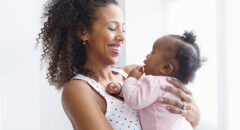
While the resurgence of COVID-19 cases in the United States has been dominating the news, an old viral enemy has been making a quieter comeback. In late spring, U.S. pediatric hospitals began reporting an unexpected rise in serious infections caused by respiratory syncytial virus (RSV). Unlike COVID-19, RSV is a long-established foe that normally emerges in late fall, peaks in the winter, and nearly disappears by summer. Although it can affect anyone, it affects infants at a more serious rate. The risk is also higher and more severe in premature babies. This is a cause of concern for Black women who have a higher risk of giving birth to a premature baby. On average Black women give birth to approximately 100,000 premature babies a year, the Savannah Tribune notes.
In most people, RSV causes nothing more than cold-like misery, such as a runny nose and cough. But it can trigger serious lung infections in babies, especially preemies, and young children with certain medical conditions.
RSV is the most common cause of pneumonia in babies younger than 1, according to the U.S. Centers for Disease Control and Prevention. It’s also behind most cases of bronchiolitis, where the small airways of the lungs become inflamed.
When RSV gets deep into the lungs, youngsters can struggle to breathe and may need to be hospitalized to receive oxygen and fluids.
READ: Could Your Baby’s Pain Be Something More?
In June, the CDC warned that pediatric hospitals in the South were seeing an unusual rise in children sickened with RSV.
Now, the pattern is showing up in other parts of the United States.
At Salt Lake City’s Primary Children’s Hospital, there has been an uptick in positive tests for RSV in the past few weeks, according to Dr. Per Gesteland, who is based at the Utah hospital.
During a recent hospital media briefing about RSV, he said that the hospital’s current RSV numbers are similar to where they would normally be in early January.
“We’re watching this very closely because we’re concerned those trends are going to








